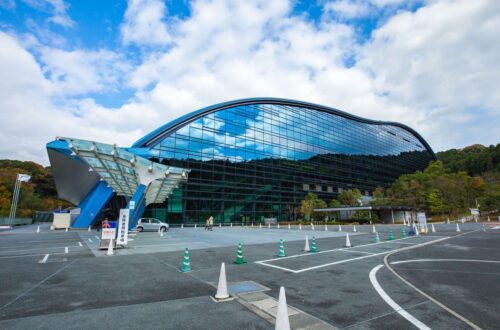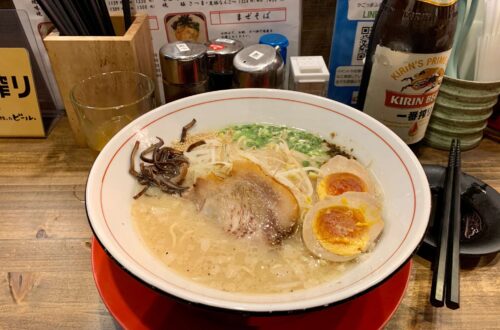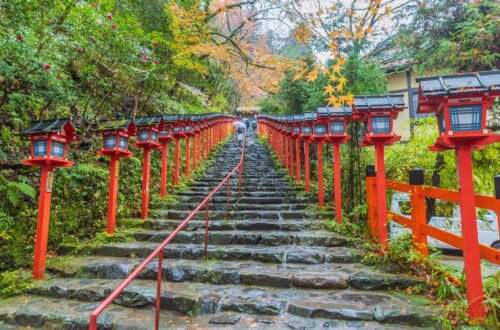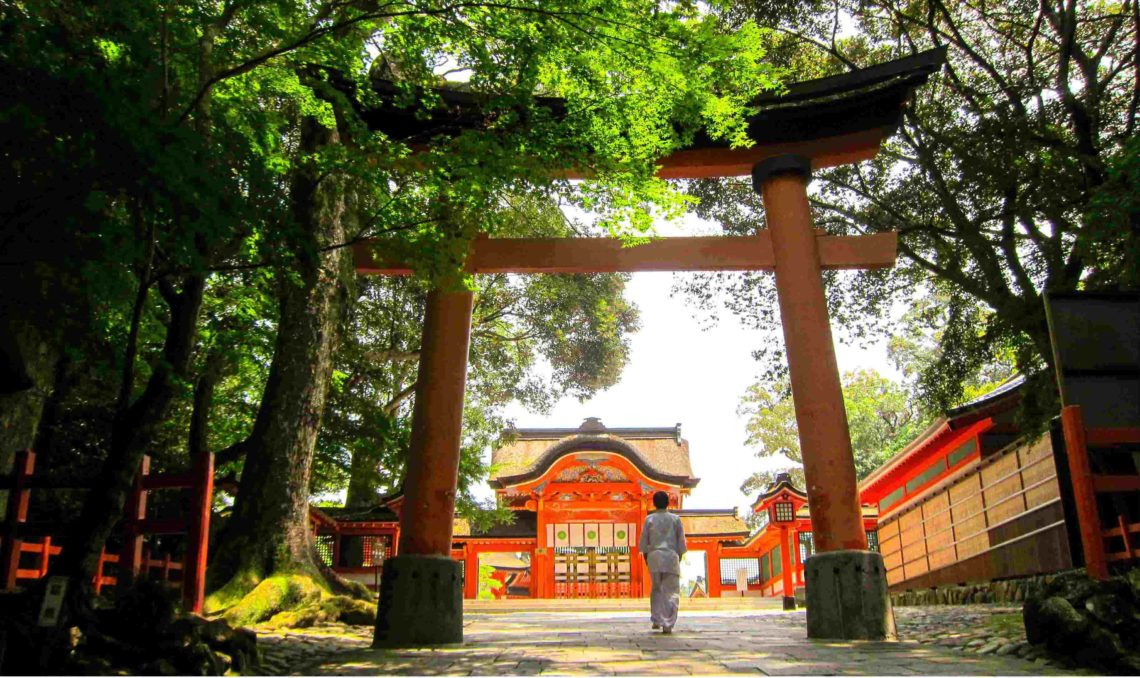
The History of Usa Jingū (Part 2 – Towards the Modern Age)
Welcome back fellow travel peeps and history fans to the second part of the history of Usa Jingū (宇佐神宮). In part 1, we explored how the shrine’s founding had created an unorthodox culture which developed into a mainstream practice that hit the country. While it had enjoyed a relatively stable life throughout the age of religions and aristocracy, things would take a turn at the beginning of the warring era.
Table of Contents
Usa Jingū in the History of the Genpei War
From Where We Left in the History of Usa Jingū Part 1
Throughout AD 1180 to 1185, the warrior clan Minamoto (源) fought against their rival, the Taira (平) for supremacy in the event known as the Genpei War (源平合戦). At first, the Taira held an upper hand given their leader Taira no Kiyomori (平清盛) secured the Imperial Court with an iron fist. Unfortunately him being a not so nice guy and a baldy resulted in many of his former allies alienated him and began rooting for the uprising Minamoto.
The leader of the Minamoto was Minamoto no Yoritomo (源頼朝), and he raised a national movement against the Taira, claiming to overthrow the baldy and rescue the Imperial Court. Ultimately when Kiyomori passed away from illness, the Taira lost their momentum and began loosing a series of battle against the Minamoto. They then retreated to Western Japan which unfortunately, would pulled in Usa Jingū (宇佐神宮) into their conflict.

When The Minamoto Burnt Their Own Deity Shrine
Now we mentioned in part 1 that Usa Jingū houses Hachiman (八幡), the number one deity the Minamoto worship before going to war. So then, why would they ended up burning their own idol’s shrine, let alone the very first shrine? To put it simple, the Taira’s stronghold were in Western Japan, including the island of Kyushu (九州).
The local Rokugo clan (六郷) who were the guardians of the Usa Jingū also supported the Taira and gave them protection in AD 1183. Imagine having your sworn enemies lodging a night, snacking, drinking sake (酒) and turning your own ancestral temple into a military base. “That’s bullshit” thought the Minamoto when they discovered and they swore to eradicate the Taira. In the following year, they coordinated an attack on Usa Jingū with a local samurai with a long name, known as Ogata Saburo Koreyoshi (緒方三郎惟栄) or Saburo for short.
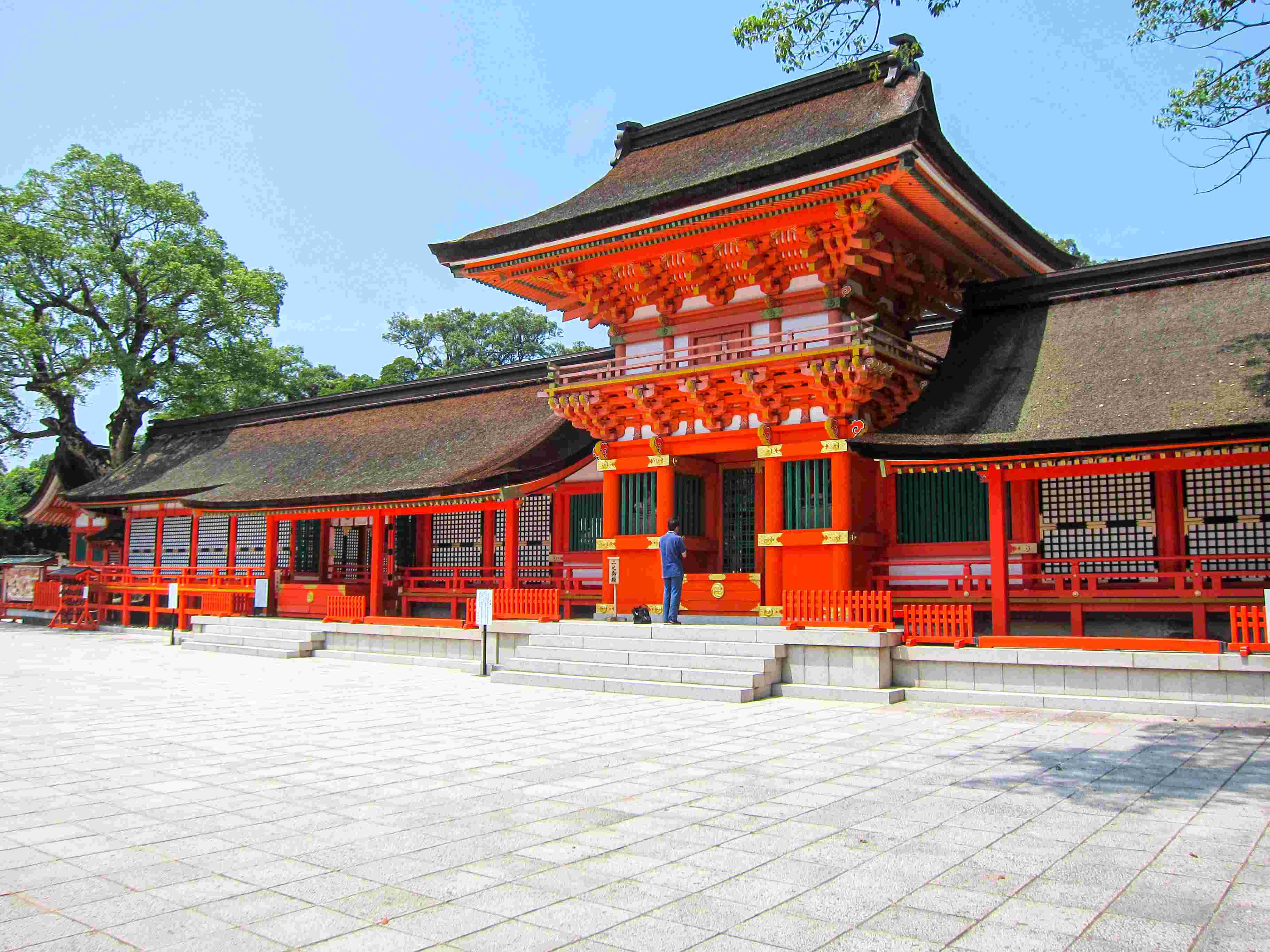
A former supporter of the Taira clan, he switched sides when the Minamoto did a favour by killing one of his long time rivals. Together with the Minamoto army, Saburo attacked the Taira and burnt the shrine, turning it into a battlefield. Controversially, he also stole the shrine’s worship object/shintai (身体). That’s equivalent to kidnapping the God out of his home.
The Aftermath of the Genpei War
In AD 1185, the Minamoto defeated the Taira in the decisive battle of Dan-no-Ura (壇ノ浦の戦い) . An irony considering the fact they were the masters of the sea. Afterwards, Minamoto no Yoritomo (源頼朝) established the very first military government/shogunate in Japan (alternatively known as bakufu or 幕府). He allowed the priests of the shrine to reconstruct Usa Jingū, albeit with very limited resources as punishment.
The Minamoto would continue worshipping Hachiman (八幡) in another shrine called Tsurugaoka Hachimangu. (鶴岡八幡宮). A move not surprising at all given how conveniently located it is in their power base Kamakura (鎌倉). While Saburo contributed to the Kamakura shogunate, he became infamous for sacking the sacred shrine till this day.
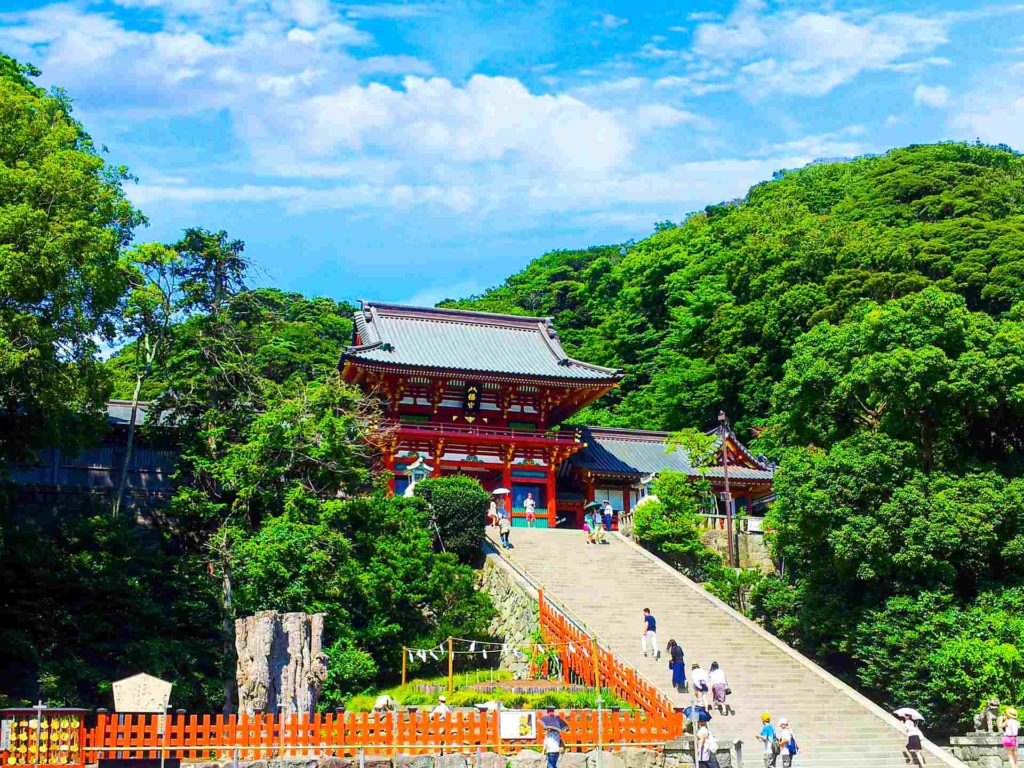
Unfortunately, most websites covered this event in little detail. Luckily, I managed to read the English edition of ‘Yoshitsune: A 15th Century Japanese Chronicle‘ by Helen Craig McCullough. It narrates the life of Yoritomo’s younger brother who fought in the war, Minamoto no Yoshitsune (源義経) and tells the story from the perspective of an action-oriented general. If you love to deep dive into the Genpei War, consider checking out this wonderful book. Usa Jingū would remained in the shadows of history for a long time, until a few centuries later when another tragedy struck it.
When A Dysfunctional Relationship Almost Destroyed the Shrine
As We Enter the Age of the Warring States
Lets fast forward to the 1500s; where the Minamoto and Taira were no more. This was the Warring States or Sengoku period (戦国時代), an era that screams war and warlords on steroids competed to rule the land. If you thought the Minamoto and Taira were horrible, these guys brought up the definition of war to another level of epicness.
This period saw yet another major player joining the fray of popular religions in Japan, Christianity (キリスト or Kirisuto). It all began when the missionary Francis Xavier (フランシスコ・ザビエル) from Spain landed in Kagoshima (鹿児島) of southern Japan. A man with a burning passion like the sun, he set out on a journey to spread Christianity around the world.
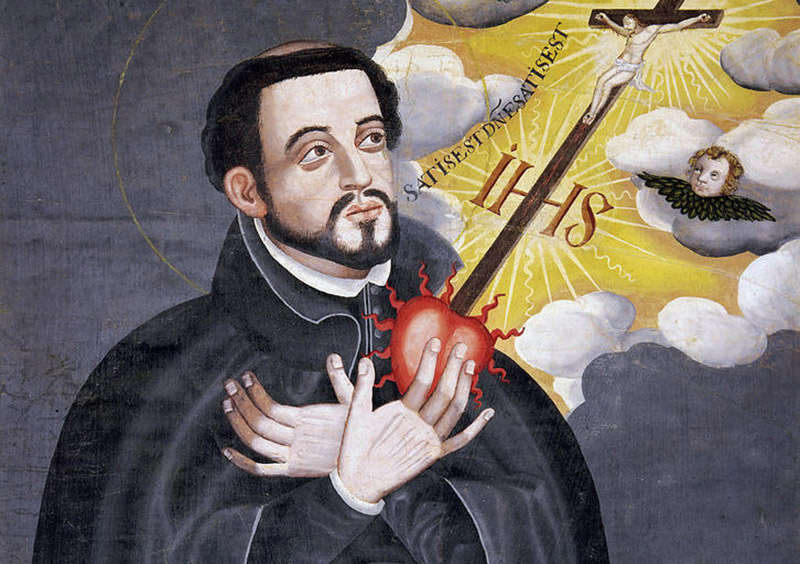
When Christianity first arrived, locals were bewildered of this strange new religion; while warlords saw opportunities with the Westerners for new businesses and trade. These warlords would convert into Christians, and became a huge power player in Japan’s politics.
A Tale of a Christian Warlord with his Buddhist Wife
One such warlord who developed fascination into Christianity was Ōtomo Sōrin (大友宗麟); the lord of the Funai domain (府内藩), presently known as Ōita (大分). He personally became buddies with Francis Xavier and the Christians, and eventually embraced Christianity himself. To show his enthusiasm, he even got himself a bad-ass name; Don Francisco which he preferred over his own name. From this move alone, we can see him being an opportunist by riding the waves of popularity in Christianity to increase his influence and expand his trade network.
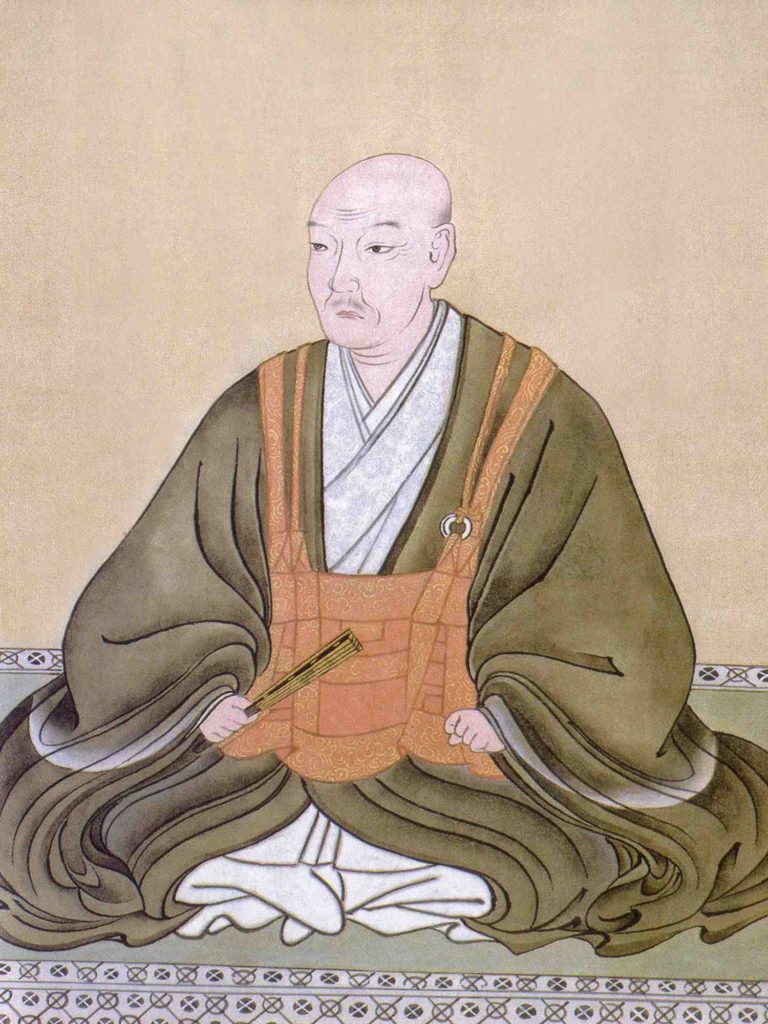
Sōrin’s wife was the influential and religious Lady Nata (奈多夫人), whom he married for 30 years and bore him 7 children. A pro-Buddhist by heart, Lady Nata served as the head priestess of Usa Jingū during that time and strongly supported the local Buddhist temples and Shinto shrines. She wasn’t happy about her husband’s conversion and saw Christianity as a foreign threat that will jeopardise the status of Buddhism (Bukkyō/仏教) and Shintoism (神道).
To show who is boss and to curb the influence of Christianity, she took various drastic measures like a raging housewife demoting Christianity which included:
- Forcing Sōrin’s Christian retainers and his son to rescind their faith
- Expelling Christian missionaries from the region
- Collecting the rosary beads and statues of presumably Virgin Mary and burned them
Her actions were atrocious to the point the Jesuits nicknamed her ‘Jezebel’, a figure in the Bible often traditionally viewed as a false prophet.
Sōrin’s Retaliation and Impact to the History of Usa Jingū
Over the years, Sōrin began to despise her and one day, he had enough and decided to divorce her after over 30 years of marriage. This was one divorce which could not be settled just by a pen and paper. This decision turned out to be a shocking news for Sōrin’s retainers, even more so for his in-laws. Lady Nata could not bore the insult and she gathered her family and supporters of anti-Christian at Usa Jingū to oppose Sōrin.
In retaliation, Sōrin repeatedly sent his army to attack and burn the shrine between 1561 to 1583. In one incident, Sōrin murdered the chief high priest of the shrine; causing it to lose it status as a safe haven for its supporters. This whole conflict was so violent, that it makes divorces nowadays feel tame in comparison. Sōrin and Lady Nata would continue fighting until 1587 where both passed away from illness.
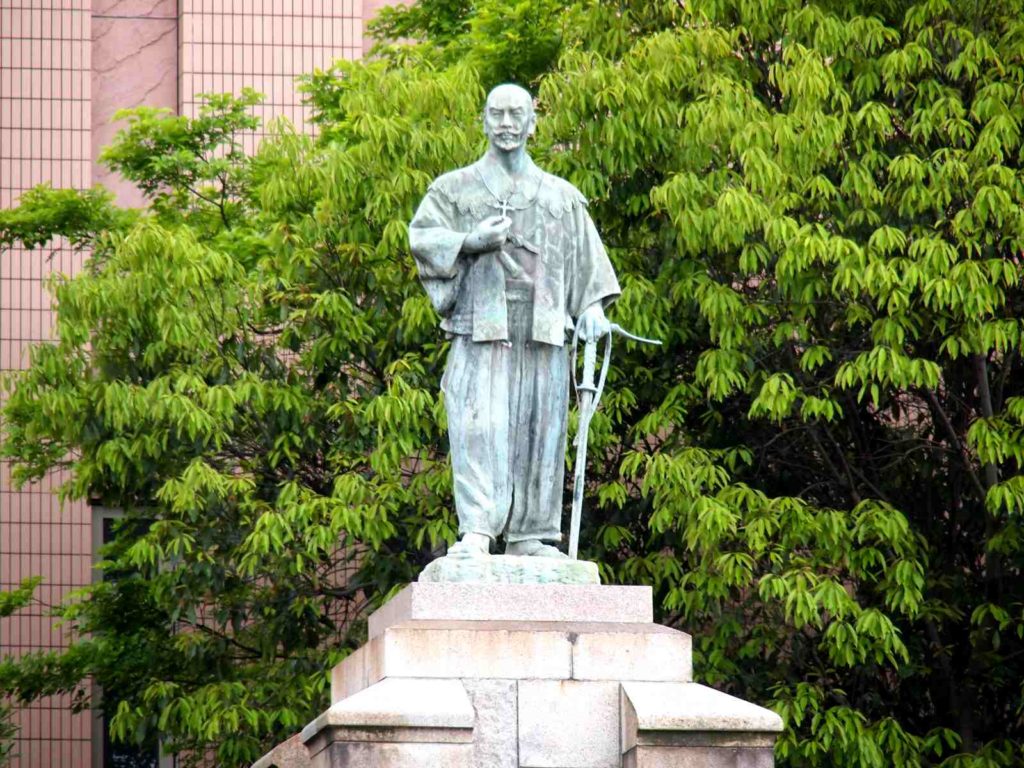
The conflict between Sōrin and Lady Nata was the first signs of competition between newcomer Christianity vs the old boys Buddhism and Shintoism. Various warlords often fought with each other for supremacy while using religion as their main reasoning. With the passing of Lady Nata, her clan lost significant prominence throughout the region.
What Happened After That?
Eventually, the Sengoku period (戦国時代) came to an end in the 1600s when a warlord named Tokugawa Ieyasu (徳川家康) who unified the land with the most exciting strategy, waiting patiently for your chance. He pioneered the last military government/shogunate (幕府) era in Japanese history known as the Edo period (江戸時代) and was a pro-Buddhist himself. This worked in favour of the shrine, as he and his descendants would ordered the shrine to be rebuilt. The present day buildings were from this period, albeit retaining the architecture and style from the ancient Nara period (奈良時代).
Once again, this event is a testament of how religions played a huge part in Japanese history and politics, especially in the case of Usa Jingū. Both husband and wife would go to extreme means to protect their respective religions and their clan welfare. Regardless, personally I think is more important to ensure husband and wife can accept each other’s religions before marriage. After all, you wouldn’t want to spend on divorce fees later purely because of differences in religion right?

Now you are wondering with so little resources online especially in English, how did I get to know the extreme details of this event? I learn most of the details of this event from ‘Women Religious Leaders in Japan’s Christian Century, 1549-165‘ by Haruko Nawata Ward. It is one of the few English sources that describes meticulously the spread of Christianity in Japan and also the contribution of various women leaders to the religion in the Sengoku period (戦国時代). If you are an avid reader and love history, this is one book worth checking out.
As The Shrine Enters The Era of Modernisation
Enter Japan’s Era of Industrialisation
After centuries of samurai (侍) bickering, Japan finally entered a period of modernisation in 1868 known as the Meiji Period (明治時代). It all began when a fleet from the USA (THE United States) under the command of Commodore Matthew C. Perry (ペリー) arrived in the capital Edo (江戸), presently Tokyo with his steampunk warships. Experienced in warfare, the Commodore used various jump scare tactics to instill fear among the Japanese government; like firing blank cannons towards the city. This was to force them to open up to foreign trade; which eventually worked when the government panicked experiencing a battleship assault.

Japan soon realised how outdated their technology was, when compared with all these steampunk battleships and cool gizmos from the West. Soon a series of civil conflicts that overthrew the last military government/shogunate (幕府); ending the Edo period (江戸時代) and Japan would begin its own Industrial Revolution. Consequently, these would lead to the events of World War 2; and also turning Japan into an economic powerhouse with all our favourite brands like Toyota (トヨタ), Sony (ソニー) and etc. This would be a story to tell for another time however and lets see what happens to Usa Jingū.
An Insane Policy from the Government
Remember in part 1 how in ancient history Usa Jingū pioneered the fusion culture of Shintoism and Buddhism (Shinbutsu shūgō/神仏習合) and the establishment of shrine-temples (Jingū-ji/神宮寺). During the Meiji Period however, the Japanese government came up with an insane policy to boost nationalism among the citizens. That policy was called Shinbutsu Bunri (神仏分離) and it was to to separate Shintoism (神) and Buddhism (仏). Bunri (分離) of course means to separate for you Japanese language lovers.

For the non-Japanese speakers, fret not as below is a simple translation for the above illustration:
A) All Buddhist terms/lingos were forbidden from Shinto names. Example; the deity Hachiman (八幡) must be addressed as Hachiman-shin (八幡神) instead Hachiman Daibosatsu (八幡大菩薩). (Note: Kami/shin (神) refers to a Shinto deity where as Daibosatsu (大菩薩) itself is a Buddhist term for the history geeks.)
B) The abolishment of all shrine-temples (Jingū-ji/神宮寺) including the Buddhist structures embedded in these complexes. (Note: This is the reason why you do not see any shrine-temple complexes in Japan at present.)
C) Buddhist monks of these shrine-temples must retire from their roles or convert to Shinto priests.
D) The removal disposal of all Buddhist related items; including Buddhist statues, sutras and artefacts.
The truth behind this however was to instill a superiority complex that Shintoism being the national religion is superior to the foreign Buddhism. Can you imagine yourself abiding to the above rules after years of practising both religions together? Things obviously did not turn for the better, including our beloved shrine.
Usa Jingū Burnt Yet Again in History
Unfortunately, the said movement lasted from 1868 to 1873 and transformed its society into an anti-Buddhism movement. It flamed various anti-Buddhist riots which thousands of temples in Japan and various Buddhist properties. Life for a Buddhist monk was like a living hell at that time. Usa Jingū as you have guessed by now was not exempted and most of its ‘Buddhist’ complex were lost in flames. This also resulted in the shrine loosing its shrine-temple status (神宮寺) and converted into solely a shrine (Jingū/神宮). Poor shrine couldn’t catch a break.

Eventually, the government admitted the propaganda failed to achieve its objectives; mainly because of Buddhism’s strong roots in Japan over the centuries. Funerals, graves and ancestral rites still required Buddhist rituals to perform and could not be separated. The movement created a status quo among Japanese that Buddhism (仏教) and Shintoism (神道) are two separate religions. In the same time, arts and culture fans were greatly displeased because the event destroyed many valuable cultural properties and treasures.
Usa Jingū Survives Till This Day
After coping with all the wars, political dramas and fires; Usa Jingū (宇佐神宮) finally got a recognition it deserved. In 1871, the overly nationalistic Japanese government created a ranking system (known as shakaku/社格) for all Shinto shrines in the country. Usa was granted the rank of Kanpei taisha (官幣大社), which was the highest rank for a shrine with close relations to the Imperial family at that time. It also meant first class privilege and priority in receiving support and funds from the government.
This ranking system however did not last as after Japan’s defeat in World War 2; the Allies (including the USA) ordered Japan to set aside the ranking system. They believed the ranking system seeded a strong sense of nationalism among its government which ultimately lead to their militaristic. After all, winners always have the final say of things in the war. Consequently, Usa converted from a state-supported shrine to a religious corporation/NGO in 1946.
Nevertheless, the government designated its main hall as a National Treasure (Kokuhō/国宝) for its unique fusion of Buddhism and Shintoism architecture. This is the Hachiman-zukuri (八幡造) architecture style and is one of the only five surviving shrines designed in this style. Being a National Treasure is like winning the Oscars in arts and rightfully so, because this style is a true testament of the shrine’s former rich Buddhist background.

Epilogue
Phew, what a long history post!! Having survived more than a thousand years, Usa Jingū (宇佐神宮) contains a rich and interesting history and remains one of the top shrines to visit in Japan. Lets summarise its colourful history once again:
- The first hybrid shrine to create a new culture of Shintoism-Buddhism
- Pioneered the worship of a new deity in both religions
- Said culture developed nationwide and spawned a conglomerate throughout the country
- Embroiled in a controversial scandal between a monk and an empress
- Burnt down by their own clan, the Minamoto for supporting their nemesis
- Burnt down again by a dysfunctional couple; when a marriage between a devout Christian and a die-hard Buddhist go completely wrong
- Burnt down once again (the poor shrine) by anti-Buddhism sentiments from an overly nationalistic government
- Finally, promoted to a high-ranked shrine and finally gotten a National Treasure status
- One of the last surviving shrines with its unique architecture style; preserving its Buddhist elements over the centuries (lucky for us travelers!!)
A symbol of entrepreneurship and resilience with a unique and deep history, this shrine is a must-visit if you are in Kyushu (九州) and keen in Shinto shrines. Do you want to know how to travel to the shrine? Check out my previous article Usa Jingū – A Complete Travel Guide to Japan’s First Hybrid Shrine on how to travel there. Miss out on the earlier history? Check out The History of Usa Jingū (Part 1 – The Ancient Times) for more history goodies.


